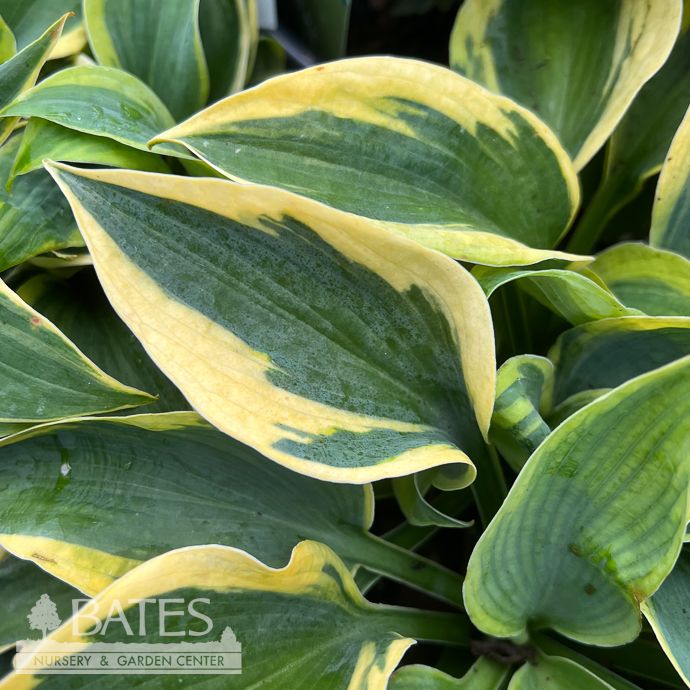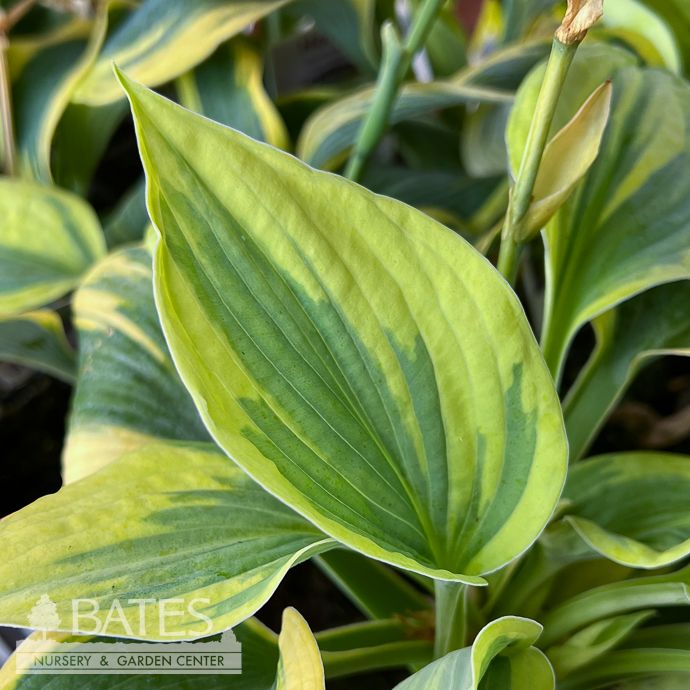#1 Hosta Tootie Mae/ Variegated
#1 Hosta Tootie Mae/ Variegated
Tootie Mae's splendid color lasts well into the hot days of summer. The corrugated and cupped leaves sport cool blue centers and wide, bright yellow margins. With near-white blooms that grow on tall scapes in summer, the Tootie Mae hosta's cheerful, tropical look will brighten any shady nook or cranny.
Scientific Name: Hosta 'Tootie Mae'
Common Name: Tootie Mae Hosta
Garden Size: 16-18 inches tall by 28-40 inches wide; scape height 20 inches
Growth Rate: Moderate
USDA Zone: 3-9
Exposure: Partial to full shade
Water & Soil: Moist, well-drained soil
Habit (Form): Mounding
Foliage: Rounded, heavily corrugated, and slightly cupped leaves with blue-green centers and wide yellow margins. The transition between the center and margin colors has a brushed or feathered appearance. The leaves are reported to hold their blue and yellow color well into the summer, though in hotter climates they may change to green with ivory margins by the end of the growing season.
Flowers: Near-white, tube-shaped flowers that grow on scapes above the foliage. Blooms early to mid summer.
Plant Origin: East Asia, primarily Japan and Korea. Most commercially available hostas are hybrids.
Wildlife Support: Hummingbirds and some bees enjoy the flowers. A favorite treat for our local deer.
Fertilizing: Apply compost in early spring before new growth emerges.
Pruning: Remove spent flower stalks to encourage new growth; trim back damaged or yellowing leaves as needed. Leave the leaves over the winter and wait until early spring to clean up.
ASPCA Toxicity flags (see their site for details): Toxic to dogs, cats, and horses
Uses: Ideal for shade gardens, woodland borders, and container plantings.
AHS Classification: Unregistered
Parentage: Sport of H. 'Tokudama Flavocircinalis'
Notes: The cultivar name 'Tootie Mae' comes from the childhood nickname of the wife of Alan Bearden, the originator of the cultivar.


